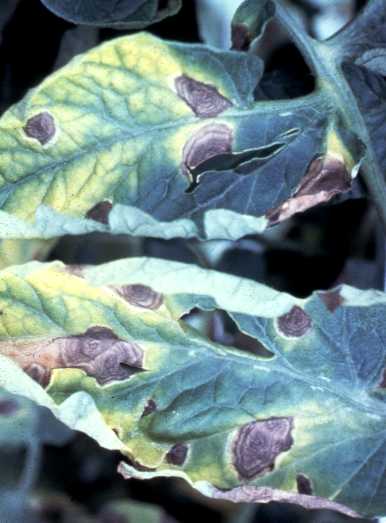Early Blight of Tomato
Causal Agent
The fungus, Alternaria solani
Hosts
Tomato
Symptoms

Control
Crop rotation with crops other than eggplant, potato, and pepper should be practiced to reduce and delay early blight development. Avoid prolonged wetting of leaves from irrigation or use drip irrigation. Maintain adequate but not excessive soil fertility. A spray program using a recommended fungicide beginning at fruit set and continuing on a 7-14 day schedule should be maintained where early blight problems are anticipated. Please contact your local county extension office for current information.
